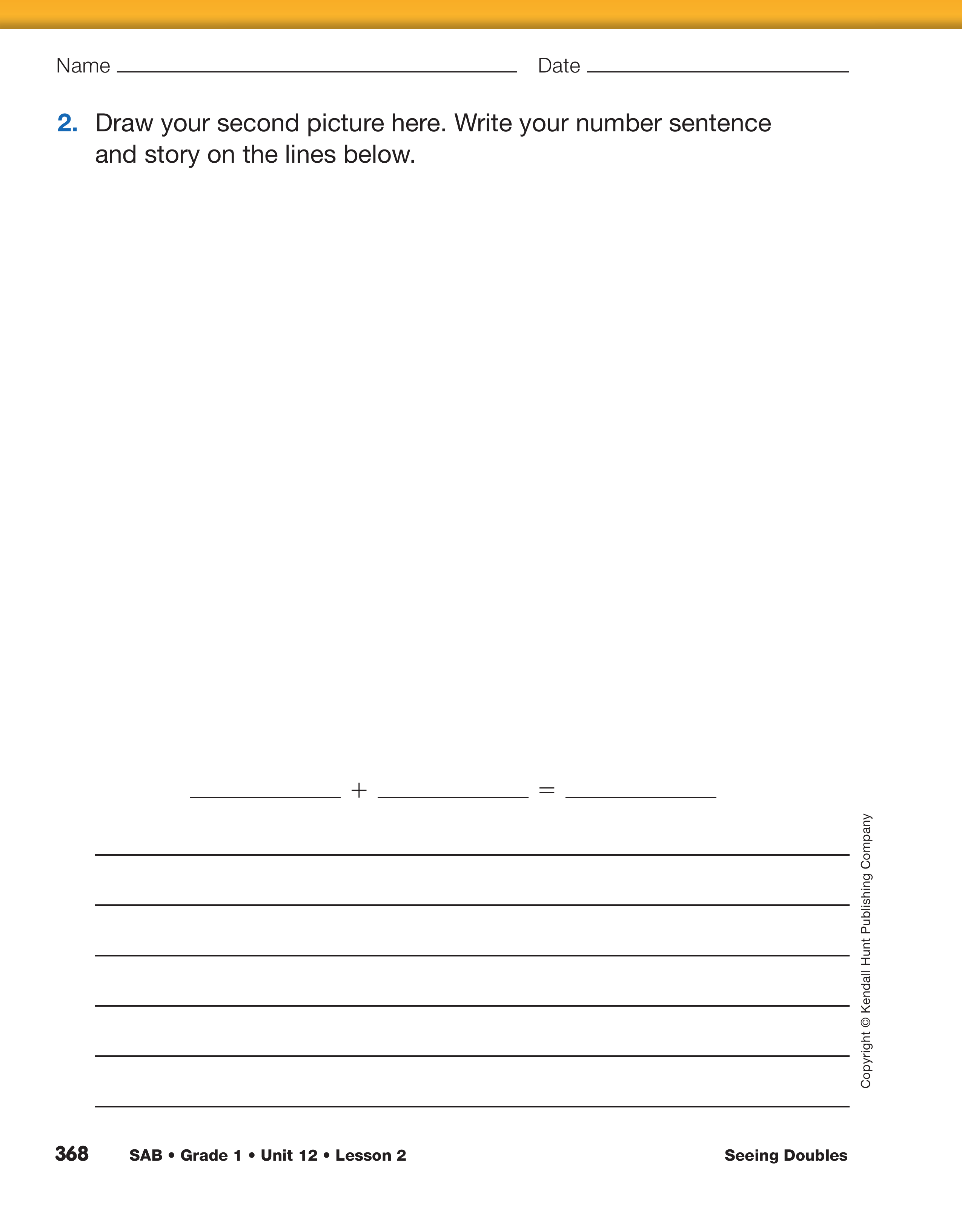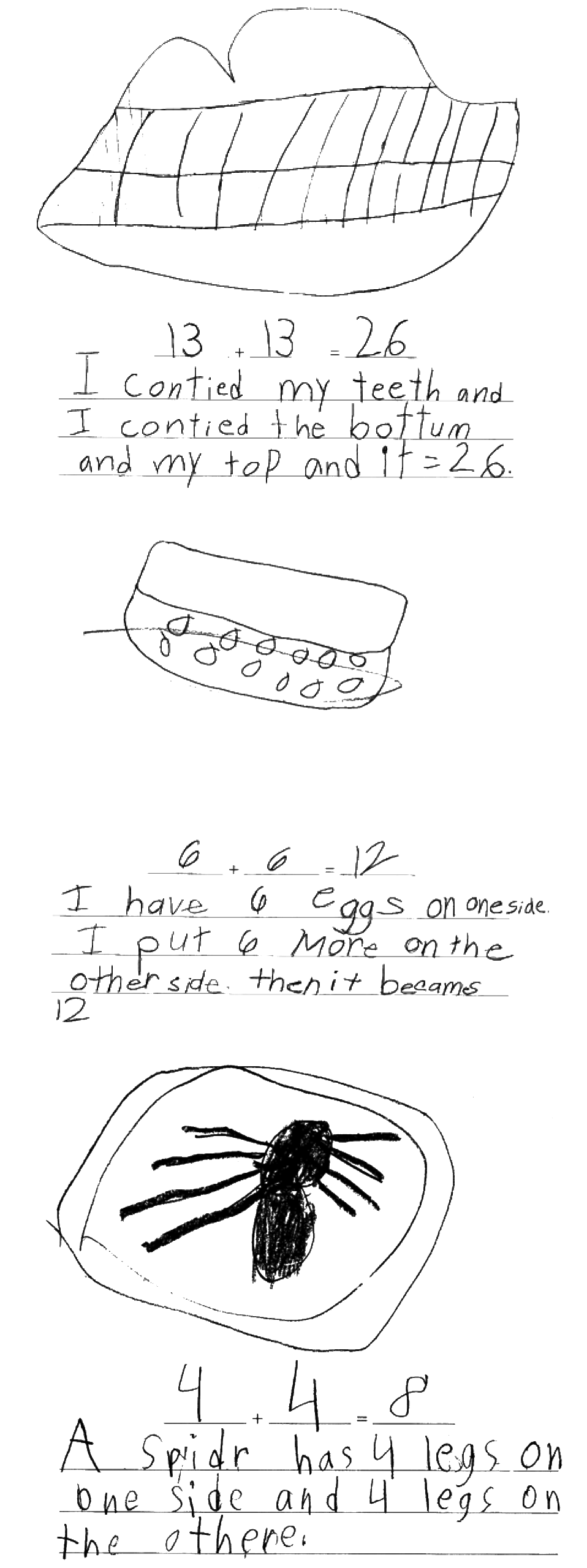Seeing Doubles
Est. Class Sessions: 1–2Summarizing the Lesson
Have the class brainstorm a list of examples that occur in pairs, such as twins, feet, gloves, shoes, and so on. Record their responses on chart paper.
Continue by having students think of doubles number sentences that reflect the items they listed. Some examples follow:
-
One hand has five fingers, so two hands have
ten fingers.
5 + 5 = 10 -
A butterfly has two wings on each side, so it has
a total of four wings.
2 + 2 = 4 -
A spider has 4 legs on each side, so it has a total
of 8 legs.
4 + 4 = 8
-
A baseball team has nine players, so two teams
have 18 players.
9 + 9 = 18 -
One week has 7 days, so two weeks have
14 days.
7 + 7 = 14
Have students write their doubling examples as number sentences on the chart displayed. Posting the chart on your Doubles Board will encourage students to add to the list as they think of more examples.
Provide time for students to complete the Doubles Problems pages in the Student Activity Book. Students may use the list of examples on the chart paper or think of examples of their own. Select a number sentence from the chart and illustrate it. Then write a brief story description as an example. See Figure 4.


















